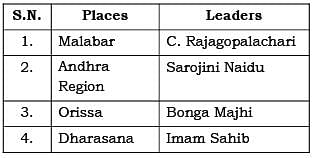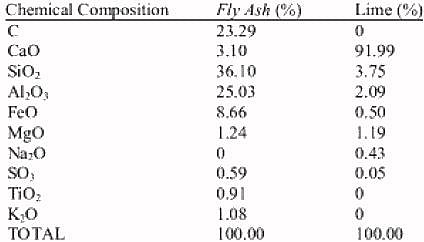UPSC CSE Complete Practice Test - 12 - UPSC MCQ
30 Questions MCQ Test Mock Test for UPSC Prelims 2025 - UPSC CSE Complete Practice Test - 12
Subhash Chandra Bose set up two headquarters of Indian National Army (INA). One was at Rangoon and the other one was at
Consider the following statements.
- The U.S. central bank usually increases the supply of dollars to tackle economic downturns and also to fund the U.S. government’s expenditures.
- The global acceptability of the U.S. dollar has primarily been attributed to the popularity of U.S. assets among investors.
- U.S. has been running a persistent trade surplus for decades now.
How many of the above statements is/are correct?
| 1 Crore+ students have signed up on EduRev. Have you? Download the App |
Variola virus is commonly associated with which of the following disease?
Consider the following statements regarding Internal Complaints Committee (ICC).
- The constitution of Internal Complaints Committee (ICC) is mandated by law under the 2013 Prevention of Sexual Harassment (PoSH) Act.
- As per law, the Internal Complaints Committee needs to have a minimum of four members, with at least half of them women.
- A functional Internal Complaints Committee is one of the key conditions set up by the Ministry of Sports to grant annual recognition to the national sports federations.
How many of the above statements is/are correct?
Consider the following statements regarding Buildings Breakthrough Initiative.
- The goal of the Buildings Breakthrough Initiative is to make near-zero emissions and resilient buildings the new normal by 2030.
- The initiative was launched by India.
- It is hosted by the Global Alliance for Buildings and Construction.
How many of the above statements is/are correct?
Consider the following statements regarding Powering Past Coal Alliance (PPCA).
- PPCA is a coalition involving governments, businesses, and organizations, focusing on transitioning from unabated coal power to clean energy.
- India is part of PPCAas it has committed to phasing out of coal production.
Which of the above statements is/are correct?
Vegetative Propagation, a form of asexual reproduction can be achieved by which of the following parts of a plant?
- Roots
- Leaves
- Stem
Select the correct answer using the code given below.
Which of the follow ing is/are the components of fly ash?
- Iron Oxide
- Potassium Oxide
- Aluminium Oxide
- Titanium Dioxide
Select the correct answer using the code given below.
With reference to Civil Disobedience Movement in different places, consider the following pairs:

How many of the above pairs is/are correctly matched?
The fine particulates can be inhaled deep into the lungs and can cause which of the following health issues?
- Breathing and respiratory symptoms
- Irritation
- Inflammations
- Lungs Damage
- Premature deaths
Select the correct option using the code given below.
The awardee for the Gandhi Peace Prize is selected by a five-member jury consisting of which of the following?
- Prime Minister
- Chief Justice of India
- Leader of Opposition
- Union Minister of Culture
Select the correct answer using the code given below:
With reference to administration of tribal areas, consider the following statements:
1. Tribal areas are autonomous districts but not independent of state control.
2. The Governor can split an autonomous district into multiple regions for diverse tribes.
Which of the statements given above is/are correct?
Consider the following statements with reference to the United Nations High Seas Treaty:
- It is the first legally binding treaty that aims at responsible use of the marine environment.
- It helps to place 30% of the seas into protected areas by 2030.
Which of the statements given above are correct?
Which of the following personalities were tried and sentenced to imprisonment in the Kanpur Bolshevik Case, 1924?
- S.A.Dange
- Muzaffar Ahmed
- Nalini Gupta
- Shaukat Usmani
Select the correct answer using the code given below.
Which one of the following statements is incorrect about the ‘Inclusiveness and Accessibility Index’?
Consider the following statements:
- It is a compilation of poems sung by women in the ancient Indian society.
- It is classified as part of the Khuddaka Nikaya, the collection of short books in the Sutta Pitaka.
- Originally, the texts were orally composed and transmitted in Magadhi, but they were subsequently written in Pali.
- It represents the earliest surviving text within Theravada Buddhism that portrays the spiritual experiences of women.
The statements given above relate to which of the following texts/treatises?
With extent of mass participation in the Civil Disobedience Movement, consider the following statements:
- Students and youth played a prominent part in the boycott of foreign cloth and liquor.
- Muslims stayed away from the movement.
- Women marked their entry into the public sphere.
How many of the statements given above is/are correct?
Consider the following statements:
- Ecological succession is defined as an orderly process wherein an initial pioneer community goes through transition to culminate into a climax community.
- Hydrosere or hydrarch succession starts in a water body like pond where the pioneer community consists of lichens and mosses.
- Xerosere (Xerarch) succession starts on a bare rock where the pioneer community consists of phytoplankton.
Which of the statement(s) given above is/are correct?
Consider the following statements regarding ‘Irregularities in polling’:
Statement I: Undue influence and bribery at elections are electoral offences under the Indian Penal Code.
Statement II: Undue influence and bribery at elections are non-cognizable offences.
Which one of the following is correct in respect of the above statements?
What are the Constitutional provisions in India to protect Biodiversity?
- Article 48
- Article 48A
- Article 50
- Article 51A
Select the correct option using the codes given below:
In the context of Unitary System of Government, consider the following statements:
Statement-I: The central government has the ultimate decision-making authority.
Statement-II: France, Japan, and the United Kingdom all have this type of government.
Which one of the following is correct in respect of the above statements?
Which of the following statements is/are correct?
- A Person of Indian Origin (PIO) means a foreign citizen, except a national of Pakistan, Afghanistan Bangladesh, China, Iran, Bhutan, Sri Lanka and Nepal.
- PIOs are not eligible to obtain an Indian passport.
- They are not entitled to enjoy parity with NRIs in economic, financial and educational benefits in India.
Select the correct answer using the code given below.
Consider the following statements with reference to Exchange Traded Funds (ETFs):
- It is a basket of securities that is traded on the stock exchange.
- Like mutual funds, they are only traded once a day after the market closes.
- There are no underlying assets involved in these operations.
- Unlike Mutual Funds, fund manager may also change the composition of the portfolio.
How many of the statement(s) above is/ are correct?
Mission 50K-EV4ECO, to promote the growth and development of value chain of India’s electric vehicle industry has been launched by:
Consider the following statements:
- Statement-I: Articles 25 to 28 of the Constitution guarantee to every person the freedom of conscience and the right to profess practice and propagate religion.
- Statement-II: In L Chandra Kumar v Union of India, the Supreme Court held that secularism is the basic feature of the Constitution.
Which one of the following is correct in respect of the above statements?
Which of the following is the main reason for Laterite soils to be considered poor for cultivation?
The Global Minimum Corporate Tax rate of 15%, as endorsed by the G7 countries, best deals with which of the following burning issues in global economy:
As per the Aihole Inscription, King Pulikesin II defeated who among the following rulers on the banks of the Narmada?
Consider the following statements regarding ‘Negative or neutral voting’:
- Negative voting allows voters to reject all of the candidates on the ballot.
- In PUCL vs. Union of India Judgement 2013 the Supreme Court held that voters have the right to express their disapproval of all the candidates by voting NOTA.
- Dinesh Goswami Committee on Electoral Reforms favoured neutral voting and was of the view that it serves a great public purpose.
How many of the above statements is/are correct?
Consider the following statements regarding the Lokpal:
1. It was established through the Lokpal and Lokayuktas Act, 2013.
2. A high-level selection committee, including the Prime Minister, Speaker of the Lok Sabha, Leader of the Opposition, Chief Justice, and eminent jurist, appoints its members.
3. The Lokpal has the authority to investigate allegations of corruption against public servants at the state level.
Which of the statements given above is/are correct?
|
16 videos|4 docs|70 tests
|
|
16 videos|4 docs|70 tests
|



















